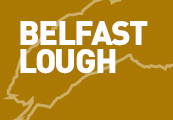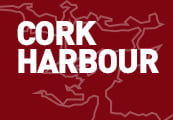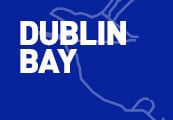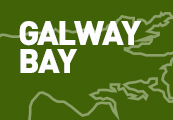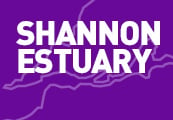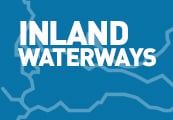Displaying items by tag: IWDG
A rare sight was caught on camera this past week with the birth of a bottlenose dolphin in Glandore Harbour.
Following reports on Monday (15 April) to the Irish Whale and Dolphin Group (IWDG) of a large gathering near Mizen Head of some 25 bottlenoses — a dolphin species not frequently seen off West Cork — a second similar-sized group was spotted two days later some 60km to the east at Glandore.
Local IWDG member Heather Mahmood flew her drone over the Glandore pod to capture some footage and images, and upon reviewing the results with her daughter Ruá on Thursday evening, the pair were surprised to discover what appeared to be a dolphin giving birth.
After sending the footage and images to the IWDG, sightings officer Pádraig Whooley came to the same conclusion.
“[It appeared] that it was indeed a female either giving birth or in the process of, as the appendage [seen protruding from the dolphin] looked very similar to a tiny, floppy tail fluke,” Whooley said.
“It is known that to maximise the chance of a successful birth, which can be a long process for all mammal species, cetacean calves are born tail-first. This is an adaptation to living in an aquatic environment, as it gives the new born the maximum breathing time inside the birth canal — that first breath being the critical one.”
Whooley referred to the IWDG’s resident experts on bottlenose dolphins, Simon Berrow and Mags Daly of the Shannon Dolphin Project, who were just as astounded.
“Neither of them have ever witnessed the birth of a bottlenose dolphin, despite being involved in monitoring the resident Shannon population now for over 30 years,” Whooley said.
“In fairness, how could they have, as this behaviour could really only be detected from an aerial perspective, which we now have at our disposal.”
The IWDG shared their findings with Cromarty-based Dr Barbara J Chaney, who studies the Scottish bottlenose population that overlaps with our own, “and her thoughts mirrored ours, that this footage was unique, both in a British and Irish context, as this event has never before been seen, let alone recorded,” Whooley added.
See the remarkable video on the IWDG website HERE.
ESB Marks Completion of Marine Mammal Observer Training Programme
The ESB has announced the completion of an industry-endorsed marine mammal observer (MMO) training programme to support those in the early stages of their careers in the marine environmental sector.
An additional key aim was to fill a gap in the Irish offshore wind industry’s local supply chain due to a lack of locally based MMOs on the island of Ireland.
Launched in 2023, the programme was open to recent graduates, final-year undergraduates and postgraduate students who studied or worked in the area of marine science or related disciplines.
The five successful applicants took part in industry-approved training courses including basic offshore safety induction and emergency training (BOSIET), the UK’s Joint Nature Conservation Committee (JNCC) MMO training certifications with additional Irish Guideline modules, and Offshore Energies UK (OEUK) approved medical and fit-to-train certifications.
Participants took part in MMO training provided by the Irish Whale and Dolphin Group (IWDG) and spent two nights onboard the research vessel Celtic Mist at Kilrush, Co Clare, followed by a half-day at sea.
All participants were also provided with one-year complimentary membership of the IWDG, the Marine Mammal Observer Association (MMOA) and the Institute of Marine Engineering, Science and Technology (IMarEST) with professional mentoring support and access to the Career Development Pathway.
 Programme participants spent two nights onboard the research vessel Celtic Mist | Credit: IWDG
Programme participants spent two nights onboard the research vessel Celtic Mist | Credit: IWDG
Speaking on the completion of the programme, ESB’s Offshore Ecology Team said the programme represents a significant milestone.
“As of 2024, Ireland now has five newly trained and much-needed MMOs as a result of this initiative. Through this programme, ESB has demonstrated its commitment to supporting the marine mammal bbserver role in Ireland, nurturing local talent which will be essential in the delivery of ESB's Net Zero targets by 2040,” the team said.
“Our funding has facilitated opportunities to enhance skilled work readiness and has strengthened local talent in collaborating with local organisations such as the Irish Whale and Dolphin Group amid Ireland’s renewable energy expansion. At the heart of this Programme is the inspiration and support of young professionals seeking fulfilling careers in marine ecology and sustainable energy.”
Amy O’Reilly, one of the newly trained MMOs, shared her insights into the experience: “The ESB MMO training programme has been a wonderful opportunity and unforgettable experience for me. When I first applied, I had a history of volunteering with marine wildlife charities and was in the middle of a nine-month internship with the cetacean charity Manx Whale and Dolphin Watch. ESB recognised my passion and drive towards building a career in the marine science field.
“Some of my highlights from the programme included sleeping on board the Celtic Mist, undergoing training by the very wise and seasoned MMO Mr Patrick Lyne and, of course, escaping from a helicopter underwater in the BOSIET training.
“I am delighted to say that with this training as a foundation, I have been able to get my first MMO role with IWDG consulting, working on a short project in Dublin Port.”
Qualified MMOs are environmental professionals who specialise in monitoring marine megafauna species and ensuring the implementation of mitigation requirements during various industry operations, and they will be key components in the delivery of offshore wind projects over the coming decade.
Ireland has a unique capability given its prime location to take advantage of the potential of offshore wind, the ESB says.
ESB to Fund Training Programme for Marine Mammal Observers
ESB has announced plans to fund a marine mammal observer (MMO) training programme which is open to graduates, final-year undergraduates and postgraduate students who are studying or working in the area of marine science or related disciplines.
The aim of the programme is to assist in developing marine ecology education and skills to support successful applicants at the early stages of their careers in the marine environmental profession.
ESB will award up to five places on the MMO training programme. All applicants must be available to participate in person for training at Kilrush, Co Clare on 4-5 November. Application forms can be requested from ESB via [email protected]. The deadline for application submissions is next Thursday 12 October.
Industry-approved training courses and medicals will be funded to bring individuals up to the standard level of competency for offshore work. These courses include Basic Offshore Safety Induction and Emergency Training (BOSIET), the UK’s Joint Nature Conservation Committee (JNCC) MMO training with Irish Guideline certifications, and Offshore Energies UK (OEUK) approved medical and Fit-to-Train certifications.
The training programme is being endorsed by the Marine Mammal Observer Association, which will offer one-year complimentary affiliate membership to successful candidates and provide further advice and mentoring support for pursuing a career as an MMO.
The programme is also being endorsed by the Institute of Marine Engineering, Science and Technology (IMarEST), which will offer one-year complimentary associate membership and one-year access to its career development pathway.
The MMO training will be provided by the Irish Whale and Dolphin Group (IWDG) and will include classroom-based training, two nights’ accommodation and a half-day at-sea experience onboard the research vessel Celtic Mist. The IWDG will also offer one-year complimentary membership to programme participants.
The ESB’s Offshore Ecology Team said: “As we continue with our drive at ESB to deliver offshore wind projects as part of our Net Zero by 2040 strategy, we are committed to promoting the MMO role in Ireland, and increasing the number of qualified and experienced local professionals that will play such an important role in the future of the industry.
“Training programmes such as this will not only add to the creation of employment opportunities but will also contribute positively to help protect species as Ireland develops offshore renewable wind energy.”
Simon Berrow, chief executive of the IWDG said: “Over the last 30 years the IWDG has been at the forefront of whale and dolphin conservation in Irish waters. Now, with increasing pressures on our seas, especially the coastal zone, there is more demand than ever for trained and experienced marine mammal mitigation experts.
“The IWDG is delighted to be working in collaboration with the ESB to provide pathways to joining the offshore industry in an environmental capacity, to ensure the continued safeguarding of marine mammals in Irish waters.”
Ashleigh Kitchiner, chair of the Marine Mammal Observer Association said: “MMOA believes that investing in developing emerging professionals is vital for the growth and sustainability of our industry. We are confident that this MMO Training Programme coupled with our endorsement and support will contribute to the success of each candidate.”
Gwynne Lewis, chief executive of IMarEST said: “Nurturing the next generation of marine professionals and ensuring their access to the resources, networks and educational opportunities essential for their development is central to our work. It is vital that we inspire, encourage and support young people to want to have a rewarding career as marine professionals.”
Qualified MMOs are environmental professionals who specialise in monitoring marine megafauna species and ensure the implementation of mitigation requirements during various industry operations. Such roles will play an important part in the delivery of offshore wind projects over the coming decade. Ireland has a unique capability given its prime location to take advantage of the potential of offshore wind.
The Shannon Estuary’s resident population of bottlenose dolphins could be under threat from plans to transform the area into a green energy hub, a conservation group fears.
Plans revealed last month in the final report of the Shannon Estuary Economic Taskforce envisage the delivery of up to 30GW of power from offshore wind energy projects in the estuary by the year 2015.
But according to the Irish Examiner, the news has prompted concern from the Irish Whale and Dolphin Group (IWDG) for the status of the estuary’s protected and unique dolphins.
Marine wildlife such as dolphins are especially sensitive to noise from human activity, such as that which would be involved in the construction and maintenance of offshore wind farms and other green energy infrastructure.
“We are lucky to have these dolphins, they are unique and it would be a tragedy if they were not there anymore in 30 years,” said the IWDG’s Dr Simon Berrow — who added that he has yet to receive a response after reaching out to Taoiseach Leo Varadkar, Environment Minister Eamon Ryan and the taskforce.
The Irish Examiner has more on the story HERE.
A fin whale found stranded near Ballinskelligs, Co Kerry at the weekend will not be subject to a post-mortem examination to determine its cause of death, the Irish Whale and Dolphin Group (IWDG) has said.
The whale was visited by IWDG strandings officer Stephanie Levesque under the Deep Diving and Rare species Investigation Programme (DDRIP).
DDRIP was initiated by the IWDG in 2022 in response to a well-documented increase in recent years in cetacean stranding records reported through the IWDG’s stranding scheme.
“Unfortunately this individual was too decomposed for a full post-mortem,” the IWDG said. “Stephanie collected a number of samples useful for biological studies but [was] not able to establish cause of death.
The whale was a male measuring 19 metres in length which would have made it not fully grown. Samples of skin, blubber and baleen were taken, the group added.
As for next steps, the IWDG says that Kerry County Council is intending to let the remains rest in situ as it is on private land in a secluded area.
Whale Tales in West Cork as IWDG Gather for AGM in Leap
The Centre of Excellence for Climate Action & Sustainability at Myross Wood House in Leap is the location for this year’s WHALE TALES.
West Cork is a good location for the event, which will start on Friday evening and continue throughout the weekend until Sunday, open to both Irish Whale and Dolphin Group (IWDG) members and the general public.
This annual meeting of the IWDG is an opportunity for all whale (and dolphin) enthusiasts to join us over a weekend to share our appreciation for these charismatic mammals and learn more about the conservation and research work being carried out by the IWDG and others.
This year’s event is being held at CECAS, The Centre of Excellence for Climate Action and Sustainability, the former religious retreat,
The weekend will start with a humpback whale film/ presentation on Friday evening, relevant to anyone living in West Cork who has ever been fortunate enough to see this iconic species. Saturday will be a “Whaley day” of news and stories from IWDG officers and an opportunity to introduce and discuss topics, including offshore renewables and Marine Protected Areas (MPAs), with plenty of time for Q&A. More importantly, this is a great opportunity to share your stories and mingle with like-minded folk, passionate about our marine environment and its wildlife.
The weather will dictate activities on Sunday morning, but the options are to hold a land-based whale watch from a local vantage point or deliver a simulated live-stranding exercise on a local beach or at the venue.
The IWDG AGM is on Saturday afternoon at 17:00, open only to current members More information from IWDG on Email: [email protected]
IWDG’s Annual ‘Whale Tales’ Gathering is Open to All in 2023
The Irish Whale and Dolphin Group (IWDG) have opened their annual gathering to all for its 2023 edition.
This year’s Whale Tales will be hosted by CECAS, the Centre of Excellence for Climate Action in the West Cork village of Leap on the weekend of 24-26 March.
The event is an opportunity to learn more about the IWDG’s conservation and research work and for members to have their say at the group’s AGM.
A packed schedule of events kicks off on the evening of Friday 24 March with a humpback whale film and presentation.
The Saturday promises to be a “whaley day” of news and stories from IWDG officers, as well as an opportunity to discuss important issues on topics including offshore renewables and Marine Protected Areas, with plenty of time for Q&As.
Among those in attendance will be Sarah Kandrot of Green Rebel Marine, who will contribute to a discussion on offshore renewable energy and its relationship with whales and dolphins.
The day will be an opportunity to share your own stories and mingle with like-minded folk, passionate about our marine wildlife and environment, the group says.
Initially opened for current IWDG members, as of last week it’s now opened to all — with a small surcharge for non-members — which the IWDG hopes will encourage as many people as possible to join in.
The AGM on Saturday afternoon at 5pm is as always open to current members, and new members are also welcome to attend with a special discounted rate now available.
For details of this as well as the conference programme and how to book your place, see the IWDG website HERE.
Nautical Institute’s Webinar: Minimising Whale Strikes-Enhancing Mariners' Awareness of these Majestic Creatures
The Nautical Institute is hosting a free webinar: Minimising Whale Strikes, Enhancing Mariners' Awareness of these Majestic Creatures which is to be held on Wednesday 15th February (9.00-10.30 GMT).
Seafarers have a love of the oceans and take great joy from sharing the environment with marine life. In fact mariners and shipping companies are often considered protectors of the oceans as can be seen by the huge efforts being made by individuals and the industry as a whole to prevent pollution at sea.
Sadly, despite our best efforts, strikes on marine mammals such as whales and dolphins continue to have an impact.
This Nautical Institute webinar seeks to explore the risk of whale strikes, help seafarers understand the nature of these mammals and identify how, with a bit of awareness, we can avoid striking them inadvertently and reduce harm against these magnificent animals which share our lives.
The following webinar Speakers are: MSC Vice President of Sustainability, MSC Mediterranean Shipping, Stefania Lallai; Dr Simon Berrow, Chief Science Officer and CEO of Irish Whale and Dolphin Group (IWDG); Sibéal Regan, IWDG Education and Outreach Officer; and National Geographic Explorer, Dr Rui Prieto, to discover the steps we can take to avoid whale strikes.
The free webinar from The Nautical Institute will be interactive, inviting feedback and questions from attendees and will provide a certificate of participation to all those who attend.
To register for this webinar click here
The Nautical Institute is a non-governmental organisation (NGO) with consultative status at the International Maritime Organization (IMO).
Our aim is to promote professionalism, best practice and safety throughout the maritime industry and to represent the interests of our members.
Irish Whale & Dophin Group (Survey Weeks)
The IWDG was founded in 1990 to establish an All-Ireland sighting and stranding scheme and to campaign for the declaration of Irish territorial waters as a whale and dolphin sanctuary.
For further information visit the IWDG website, noting that dates for their survey weeks are now open for those to join them on board their research vessel, the RV Celtic Mist.
By becoming a member, come on board to help us collect important data on whales, dolphins, and porpoises in our waters. For details visit this LINK:
Irish Whale and Dolphin Group Establishes Fin Whale Photo Identification Catalogue
The Irish Whale and Dolphin Group (IWDG) has combed through years of accumulated images to make a start on its new photo identification catalogue for fin whales in Irish waters.
And the group is calling on anyone with good-resolution images of the often elusive cetaceans to submit them to the catalogue for appraisal and potential matching.
“It only takes one strong image to reveal an animal’s identity,” IWDG sighting officer Pádraig Whooley says, “and in time this citizen science resource should begin to tell us more about the life histories of the wider cohort that arrive annually along the Irish South Coast most years during May.”
Whooley explains that recording of fin whales in Ireland — historically the more dominant of Ireland’s two large baleen whale species — had taken a backseat to that of the larger, more easily photographed humpback whales which began arriving in greater numbers a decade ago.
Another reason for this shift in emphasis, Whooley says, was the “international significance” of Ireland’s rising numbers of a marine wildlife species, in humpbacks, that has been more susceptible to commercial exploitation.
In recent weeks, however, Whooley says the time was right to revisit the IWDG’s trove of fin whale images which he and Andrew Malcolm have “whittled them down” to a starting set of “53 well-marked individuals, several of whom have been recorded over multiple years”.
“As with the humpback catalogue, these animals have been allocated unique references with associated sightings histories and are stored on a Google drive for ease of matching new images and sharing with colleagues both at home and overseas,” Whooley adds.
It’s hoped to grow this collection with contributions to the public to [email protected]. The IWDG asks that submissions be of at least medium to high resolution, sharp and shot within 100 metres of the focal animal. Especially desired are photos that show “a well-marked dorsal fin or linear scars, blemishes, signs of ship-strike injuries, entanglement marks etc” that will ease identification.
“Given the nature of fin whales and what appears to be declining numbers in Irish waters, this catalogue will no doubt throw up many challenges in the years ahead, but we’re confident there will also be some fascinating discoveries that will help inform future management plans for the largest whale in our coastal waters,” Whooley says.
“As with the humpbacks, one of the first questions we’ll be hoping to answer is, where are their breeding grounds? It’s remarkable that thus far this vital piece of ecological information has eluded whale researchers… perhaps the Irish fin whale catalogue will help solve this mystery?”
An abridged version of the fin whale catalogue will be made available on the IWDG website for citizen scientists to try to match any fin whales they’re fortunate to encounter.
IWDG Hails Return of Whale Watch Day With More than 500 People Joining In Around the Coast
Despite lower attendance and a reduced sighting rate, the Irish Whale and Dolphin Group (IWDG) says it is “delighted” with the return of its All-Ireland Whale Watch Day last month.
Held on Saturday 20 August during Heritage Week and for the first time since 2019, on account of the COVID pandemic, this year’s event saw an overall decline in attendance (-38% on 2019) and fewer cetacean sightings (33% of sites compared to 58% in 2019).
IWDG sightings officer Pádraig Whooley, who organised the event, suggested that a confluence of factors — from windy conditions on the day to the legacy of the pandemic and even holidays abroad — may have affected the turnout.
In addition, the poor sea state at many watch sites would have affected the sighting rate, with the best results at Clogherhead in Co Louth (two dolphin species and four harbour porpoises) and Howth Head in north Co Dublin (10 harbour porpoises). No whales were recorded at any of the 18 sites.
But some 530 marine wildlife enthusiasts made a day of it around the Irish coast, and Whooley is optimistic about the future of the initiative.
“We hope that among those who attended, there will be some new members and dedicated whale watchers who are willing to volunteer some of their time and energy in furthering our understanding of the whales and dolphins that live in Irish coastal waters,” Whooley said.
“Our challenge, post-pandemic, is to find new and innovative ways to rebuild this important natural history event and so we may explore the potential for moving it to May in 2023 to coincide with Biodiversity Week.”

